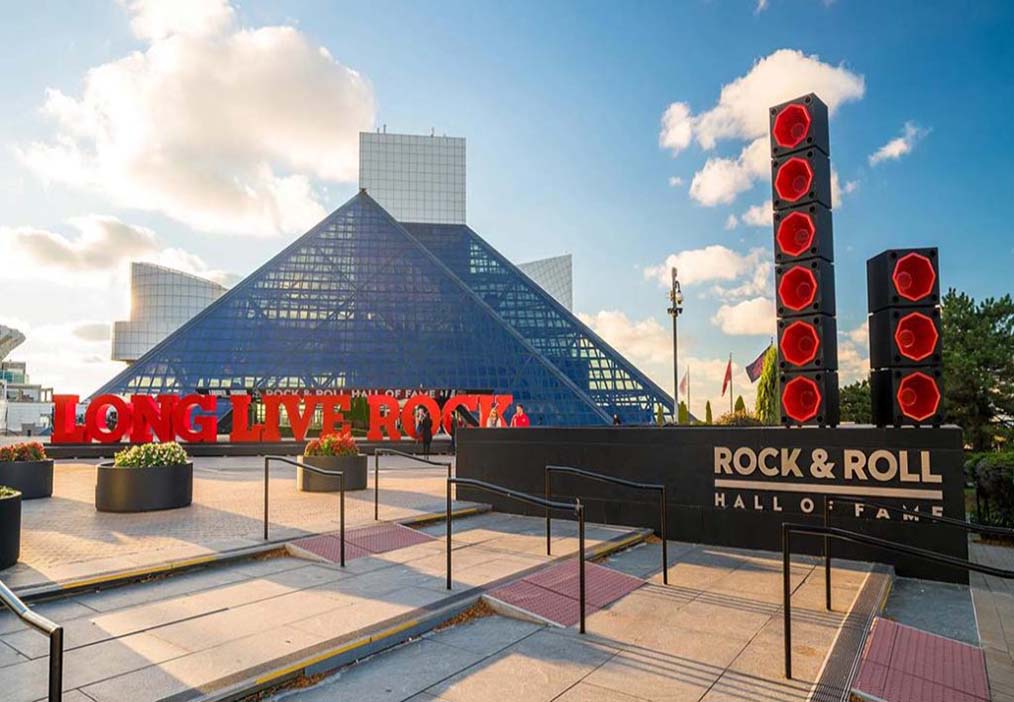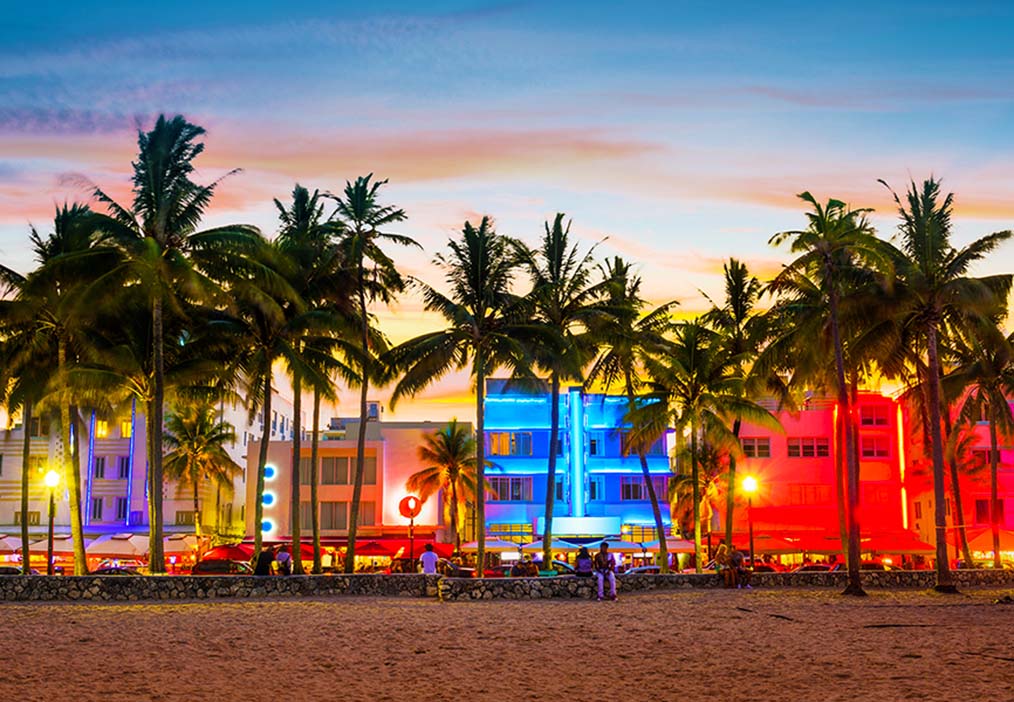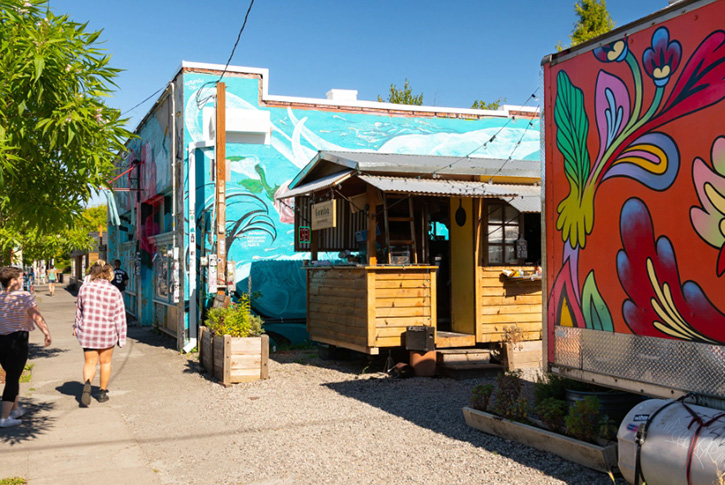As the pulsating heart of Colombia, Bogotá is a majestic picture of contrasts and a testament to Colombia’s enduring spirit. Home to some 10 million inhabitants, the capital is steeped in a rich history, meticulously preserved in its Spanish colonial architecture, while also being projected into the city’s innovative and sophisticated future. Perched high in the Andes at a breathtaking 2,640 meters above sea level, Bogota is a fascinating mix of old and new. Its cobbled streets in the historic La Candelaria district contrast with the ultra-modern skyline of skyscrapers and bustling boulevards. The city’s vibrant street life, set against the majestic backdrop of the Andes peaks, presents a vibrancy and exuberance that is as compelling as it is endearing. The city’s food scene is as diverse as its culture. From roadside empanada stands to upscale restaurants serving international cuisine, Bogota is a culinary hotspot. The city’s love of coffee is reflected in its many coffee shops, where you can sample some of the best coffee in the world from all over Colombia. However, what really sets Bogota apart and attracts tourists from all over the world is its people – the “Bogotas”. Warm, hospitable and full of energy, they imbue the city with an infectious energy and spirit. The city’s parks and squares often become the stage for spontaneous music and dance performances, reflecting the city’s vibrant and energetic spirit. It’s an immersive experience that goes beyond sightseeing to engage your senses, challenge your perceptions and give you a deeper appreciation for this fascinating city and its people.
1. Things To Do in Bogota

La Candelaria: The historic heart of Bogotá, La Candelaria, is a must-visit. Its cobblestone streets, colorful colonial buildings, and numerous museums, including the iconic Botero Museum, tell tales of the city’s rich past.
Monserrate: A trip to Bogotá is incomplete without a visit to Monserrate. Accessible by funicular or cable car, it offers unparalleled views of the city. The church atop the hill is a place of pilgrimage and the restaurants offer tasty Colombian cuisine.
Gold Museum: Home to one of the most extensive collections of pre-Columbian gold artifacts, the Gold Museum provides a unique insight into Colombia’s indigenous cultures.
2. Bogota’s Best Neighbourhoods

La Candelaria — Bogota’s colonial district. Best for backpackers on a tight budget and those who want to be close to the main tourist sights in the city. It’s not the safest of neighbourhoods in Bogota, so be sure to stick to areas where there are hostels and restaurants, and stay off of the main roads. It’s also recommended you take taxis rather than public buses.
Zona Rosa — The party area of Bogota. We avoided this area because bright lights, late nights and thumping music are not our scene.
Chapinero — Bogota’s coolest neighbourhood with hipster cafes and bouldering walls. We stayed for a week in this neighbourhood and loved it. There’s a friendly vibe, lots of really great places to eat and you can walk around.
Parque 93 — The high-end neighbourhood of Bogota, and also the safest. Luxury apartment blocks and hotels, and fine dining restaurants characterise this area of the city.
3. Where to Stay in Bogota

Chocolate Hostel (La Candelaria): A budget-friendly option offering comfortable accommodation, friendly atmosphere, and easy access to nearby attractions.
Airbnb Apartamento Chapinero: For a more local experience, consider renting an apartment in the bustling Chapinero district, known for its diverse food scene and nightlife.
4. Where to Eat in Bogota

Mesa Salvaje (Chapinero) — Mesa Salvaje is a popular coffee shop that stays open late enough to serve beer and snacks. There’s outdoor seating, but you might be hard pressed to get a table during busy periods. They make a “meal of the week” which was an excellent roasted aubergine and rosemary oil dish when we were in town.
Mistral Panaderia Artesanal (Chapinero) — This bakery/cafe is a popular spot for local students to work and grab a bite to eat. You can get a falafel sandwich and a soup of the day for around COP $17,000. Consider grabbing a croissant or quiche for the road while you’re there.
Amen Ramen (Chapinero) — Amen Ramen is a hipster ramen bar in Chapinero. So hipster, in fact, that we had to ring the bell twice before they let us in. They have an ambitious menu including ma-po tofu ramen, kimchi ramen and vegetable ramen, which was served with seasonal local produce. Prices start from COP $28,000 per bowl, plus service charge and taxes.
5. Is Bogota Safe?

A question often asked by first-time visitors concerns safety in Bogota. Admittedly, the city has had safety issues in the past, but the current situation is very different. Colombia as a whole, and Bogota in particular, have made significant strides in improving security over the past few decades. Today, Bogota is as safe as any other major metropolis worldwide. Remember that Bogotá is a city of 10 million people and experiences vary wildly. It is recommended that you familiarize yourself with the city’s neighborhoods and transit system, and ask locals or hotel staff for area-specific safety precautions. It’s also worth noting that the people of Bogotá are very welcoming to tourists and are often very willing to offer help or advice, which greatly adds to the overall feeling of safety and comfort when navigating the city. Despite its challenges, the city’s vibrant culture, rich history and welcoming people make Bogotá a destination worth exploring. With sensible safety measures, your trip to Bogota will be an unforgettable and enriching experience.
6. Getting In and Out of Bogota

El Dorado International Airport, located about 15 kilometers west of the city center, is the main gateway to Bogotá, linking it with major cities around the world and offering frequent flights to domestic destinations in Colombia. The airport is modern and well-equipped with a wide range of services including shops, restaurants and car rental companies. Getting into the city is easy with taxis and ride-hailing services such as Uber, as well as bus services connecting the airport with major locations in Bogota.
The city’s main bus terminal is Bogota Transport Station, which offers several routes that crisscross the city. Regular bus services run to and from major cities such as Medellin, Cali and Cartagena. Buses vary in level of comfort, from basic to “luxury,” and often include amenities like reclining seats and on-board Wi-Fi.
For a comfortable and hassle-free travel experience, I recommend you book your tickets well in advance, especially if you plan to travel during the peak holiday season. Also, while taxis are a popular choice for short trips within cities, for longer trips or trips to the suburbs, consider renting a car or using a reliable ride-hailing service for added convenience and safety.
Whether you’re visiting Bogota for its rich history and culture, or as a starting point to explore Colombia’s diverse landscapes, the city’s transport network makes getting there and navigating with ease. As always, local residents and hotel staff can provide valuable advice on the best transportation options for your specific itinerary and needs.
The bustling capital city of Bogota is a treasure trove of experiences, rich in history and culture. Vibrant neighborhoods, incredible food, a rich coffee culture, a diverse arts scene, and friendly, welcoming locals really make it a city like no other. Walking through the busy streets, you quickly realize that Bogota is not just a city, it is a city. It’s a feeling, a rhythm, a story unfolding around every corner. Whether you’re hiking up Montserrat, soaking up the buzzing nightlife of Zona Rosa, sipping a cup of world-famous Colombian coffee at Chapinero, or simply strolling the cobbled streets of La Candelaria, every moment adds something unique to your Bogotá experience. discourse narrative.





